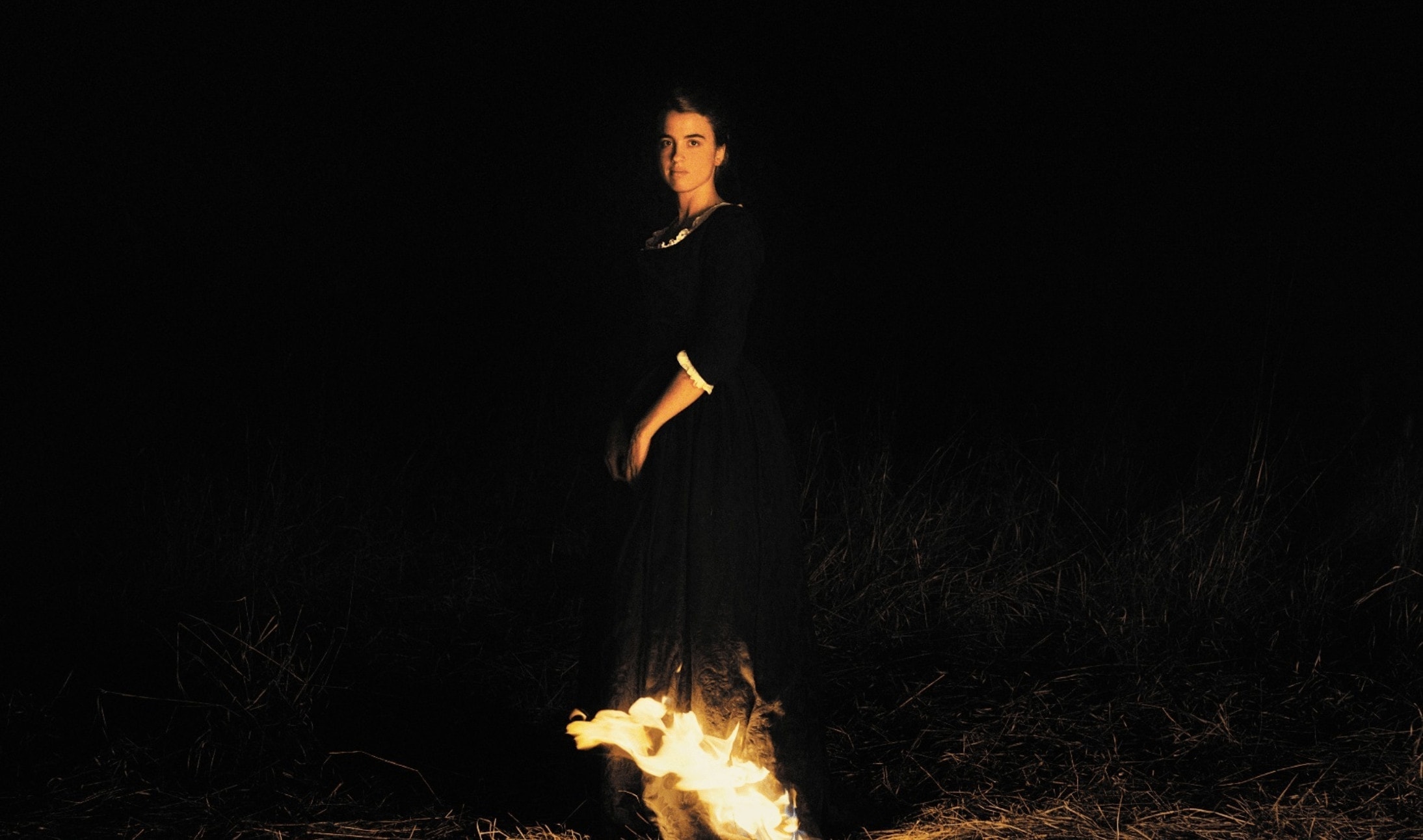

An eighteenth-century drawing class. ‘Not too fast. Take time to look at me,’ the teacher says. A cue as much for the viewer as her female students. So we, too, are watching a woman examining, guiding, shaping the way she’s being looked at. From the very first scene, Portrait of a Lady on Fire troubles the male gaze.
So we, too, are watching a woman examining, guiding, shaping the way she’s being looked at.
The teacher, Marianne, notices one of the students has brought out the titular painting, which shows a woman on a moonlit plain, her dress hemmed with rising flames. A painting as a frame — the story of its making and the illicit affair between a painter and her subject.
ArrayWe follow Marianne’s recollection, as she travels in a listing boat to an island off Brittany. She’s a woman who refuses to be confined — when one of her canvases falls overboard, she doesn’t hesitate to jump in after it. Once she has dried off, smoking her clay pipe in front of the hearth, we learn why the artist is here.
She has been commissioned by Héloise’s countess mother to complete a painting of her daughter, which will be sent to a Milanese nobleman, preceding the pair’s wedding. Héloise, however, won’t be captured — either by the death-in-life that is domesticity and marriage, or by brushstrokes and pigments. ‘She refuses to pose,’ her mother explains. Instead, while acting under the guise of appointed companion, Marianne must scrutinise Héloise in secret, and in enough detail to paint her from memory.
ArrayEverything, including the plot, steers us towards the act of looking: from Claire Mathon’s measured and attentive cinematography, with its painterly tinctures, to the film’s distinct lack of music which might otherwise colour our perception. From Marianne’s (Noémie Merlant’s) large, brown irises to Héloise’s (Adèle Haenel’s) fixed and crotchety stares, we wait for the slow-burn of glances to turn to touch. But, ’Not too fast’ — we were warned.
Director Céline Sciamma skillfully delays Héloise’s first appearance, heightening our sense of her as an elusive subject. And when she does appear, around twenty minutes in, we trail her through Marianne’s eyes in a long tracking shot. The focus is the bobbing fabric of her hooded cloak (and it’s testament to costume designer Dorothée Guiraud that the clothes manage to authenticate the period setting, while conveying more modern aesthetic and emotional sentiments — a heavy hood for a heart that wants to hide).
ArrayDuring this walk, as Héloise picks up speed, the hood falls down, revealing a nest of blonde hair. Then she’s sprinting towards a cliff — a tense moment, because we know her sister died in a similar way — leaving Marianne struggling to catch up. Héloise skids to a halt at the edge. She turns around to face Marianne, and us, for the first time. ‘I’ve dreamt of that for years,’ Héloise says. ‘Dying?’ Marianne asks. ‘Running,’ she replies. Héloise, having been confined to a convent for a time, wants the same freedom that Marianne has. Only, that’s not what awaits her.
Though men (besides the boatmen) are absent here, the symbolic power of the Milanese nobleman looms large. He will have this painting, as he will possess his betrothed. Later, when Marianne confesses that she’s been depicting Héloise in secret, the aristocrat is disappointed. Viewing the portrait for the first time, she asks, ‘Is that how you see me?’ In a moment of recklessness, Marianne destroys the painting, prompting Héloise to agree to pose for her.
Array‘Uncover your throat,’ Marianne requests during a sitting. ‘You have my future husband in mind,’ Héloise says. While the artist is rehearsing the conventions of canonical portraiture in rendering her subject’s cleavage, she’s also participating in the erotic codifications of sexual difference — in painting, as in life. Art critic John Berger puts it succinctly when he says, ‘Men look at women. Women watch themselves being looked at.’
Art critic John Berger puts it succinctly when he says, ‘Men look at women. Women watch themselves being looked at.’
Héloise’s question, as well as the film’s, is ‘If you look at me, who do I look at?’ Here, the gaze is reciprocated — power relations are collapsed momentarily when subject becomes object becomes subject, ad infinitum. On the one hand, beauty lies in permanence — in the ability of art to outlive its maker and the flicker of memory hemmed with flames. On the other, beauty — the pleasure in looking, as it pertains to the active/male and passive/female divide — is something the film queers and dismantles. That might sound overly intellectual, but Portrait of a Lady on Fire makes the head throb heartlike. A beautiful film; a pleasure to watch — though with scopophilia thrown overboard. Go take a look.




